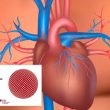✔️ Watch again the DAPT Session in the SOLACI-CACI 2021 Congress. 👨‍🏫 Program: 02:58 – Short versus long-term DAPT Therapy in High Risk Bleeding. Rationality and Preliminary Results of Master DAPT trial – Peter Smits. 31:20 – Rationality of long-term DAPT in Chronic Stable Angina – Ernesto Duronto. 48:14 – Selection of the best P2Y12<a href="https://solaci.org/en/2021/09/21/solaci-caci-2021-dapt-session/" title="Read more" >...</a>
Two-Stent Strategy is Safer in True Bifurcation Lesions
Courtesy of Dr. Carlos Fava. DES have improved PCI outcomes, but one of its biggest challenges continues to be bifurcations (especially when we have to use two stents, since it’s been associated to higher restenosis and stent thrombosis rates). Left main coronary artery true bifurcation lesions are the ones that generate the greatest challenge and<a href="https://solaci.org/en/2020/07/28/two-stent-strategy-is-safer-in-true-bifurcation-lesions/" title="Read more" >...</a>
ESC 2019 | CLARIFY: Symptoms Predict Risk Only in Patients with Prior MI
The 5-year follow up of patients with chronic stable angina (or as the guidelines currently call it “chronic coronary syndrome”) indicate the risk of cardiovascular death or non-fatal MI is quite low, but risk factor control is still fairly poor. This information comes from the CLARIFY study, presented at ESC 2019 and published simultaneously in<a href="https://solaci.org/en/2019/09/09/esc-2019-clarify-symptoms-predict-risk-only-in-patients-with-prior-mi/" title="Read more" >...</a>
Amount of Baseline Ischemia in Patients with Multivessel Disease and Long-Term Progress
According to this recent analysis of the MASS II trial, which will soon be published in JAMA, baseline ischemia is not associated with events at 10 years in patients with chronic stable angina. The ischemic burden induced through exercise does not predict events or long-term ventricular function. Such data add some suspense to the results<a href="https://solaci.org/en/2019/08/05/amount-of-baseline-ischemia-in-patients-with-multivessel-disease-and-long-term-progress/" title="Read more" >...</a>
Functional Assessment of Lesions: Advances with MRI
Computer tomography (CT) had taken over in the race to develop software capable of measuring FFR non-invasively. Magnetic resonance imaging (MRI) wouldn’t fall behind and has also tried non-inferiority vs an FFR based strategy, according to this study recently published in the prestigious NEJM, called MR-INFORM. In patients with chronic angina and CAD risk factors,<a href="https://solaci.org/en/2019/06/26/functional-assessment-of-lesions-advances-with-mri/" title="Read more" >...</a>
CTO Revascularization Improves Quality of Life
Courtesy of Dr. Carlos Fava. The presence of CTO hovers around 15, 20% in coronary angiographies of patients with chronic stable angina, but only 5% receive percutaneous coronary intervention (PCI). One of the obstacles to percutaneous revascularization is the lack of relevant studies justifying it, though we do have different comparative studies that improve symptoms, ventricular<a href="https://solaci.org/en/2018/06/08/cto-revascularization-improves-quality-of-life/" title="Read more" >...</a>
EuroPCR 2018 | SCAAR Registry at 10 years: FFR improves decision making in the long term
The SCAAR registry aimed at showing the differences in mortality at very long term when using functional assessment of coronary lesions (with FFR or iFR) in patients with chronic stable angina. The study compared 3460 patients assessed with FFR/iFR against 21221 patients undergoing PCI based on angiography, between January 2005 and March 2015. As<a href="https://solaci.org/en/2018/05/24/europcr-2018-scaar-registry-at-10-years-ffr-improves-decision-making-in-the-long-term/" title="Read more" >...</a>
Patients and Healthcare Providers Benefit from Less Symptoms and Lower Costs with FFR
Previous studies in which revascularization was guided by angiography alone found that coronary angioplasty does not improve outcomes compared with optimal medical treatment in patients with chronic stable angina. The FAME 2 trial (Fractional Flow Reserve Versus Angiography for Multivessel Evaluation) compared angioplasty guided by fractional flow reserve (FFR) with optimal medical treatment, arriving to<a href="https://solaci.org/en/2017/12/05/patients-and-healthcare-providers-benefit-from-less-symptoms-and-lower-costs-with-ffr/" title="Read more" >...</a>
Non-Invasive FFR: CT Evolves from Anatomical to Functional
In the US, more than 4 million patients with chronic stable angina are looking to rule out heart disease. Most undergo functional diagnostic studies that might lead to invasive coronary angiography followed by revascularization. CT has become an alternative diagnostic tool thanks to its precision to rule out heart disease (negative predictive value between 97<a href="https://solaci.org/en/2017/12/01/non-invasive-ffr-ct-evolves-from-anatomical-to-functional/" title="Read more" >...</a>
TCT 2017 | FAME 2 at 3 Years: Better Results with Angioplasty and at a Cost Similar to Medical Treatment
Courtesy of SBHCI. Angioplasty in patients with chronic stable angina and functionally significant lesions improves clinical outcomes and quality of life over the long term, as compared with optimal medical therapy alone. Furthermore, the invasive approach becomes more cost-effective as the years go by. Previously, FAME 2 had shown that angioplasty was initially more expensive, but<a href="https://solaci.org/en/2017/11/06/tct-2017-fame-2-at-3-years-better-results-with-angioplasty-and-at-a-cost-similar-to-medical-treatment/" title="Read more" >...</a>









